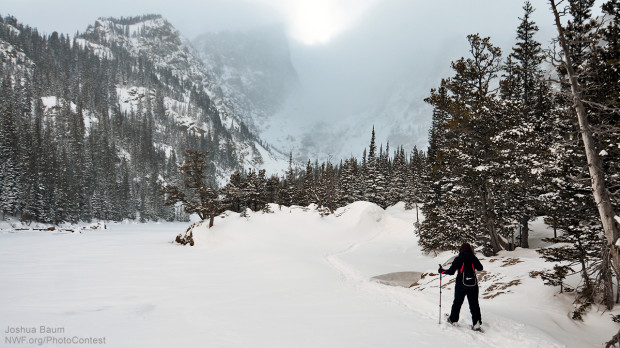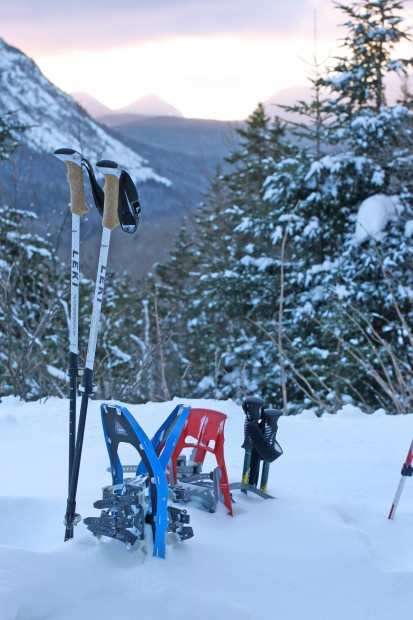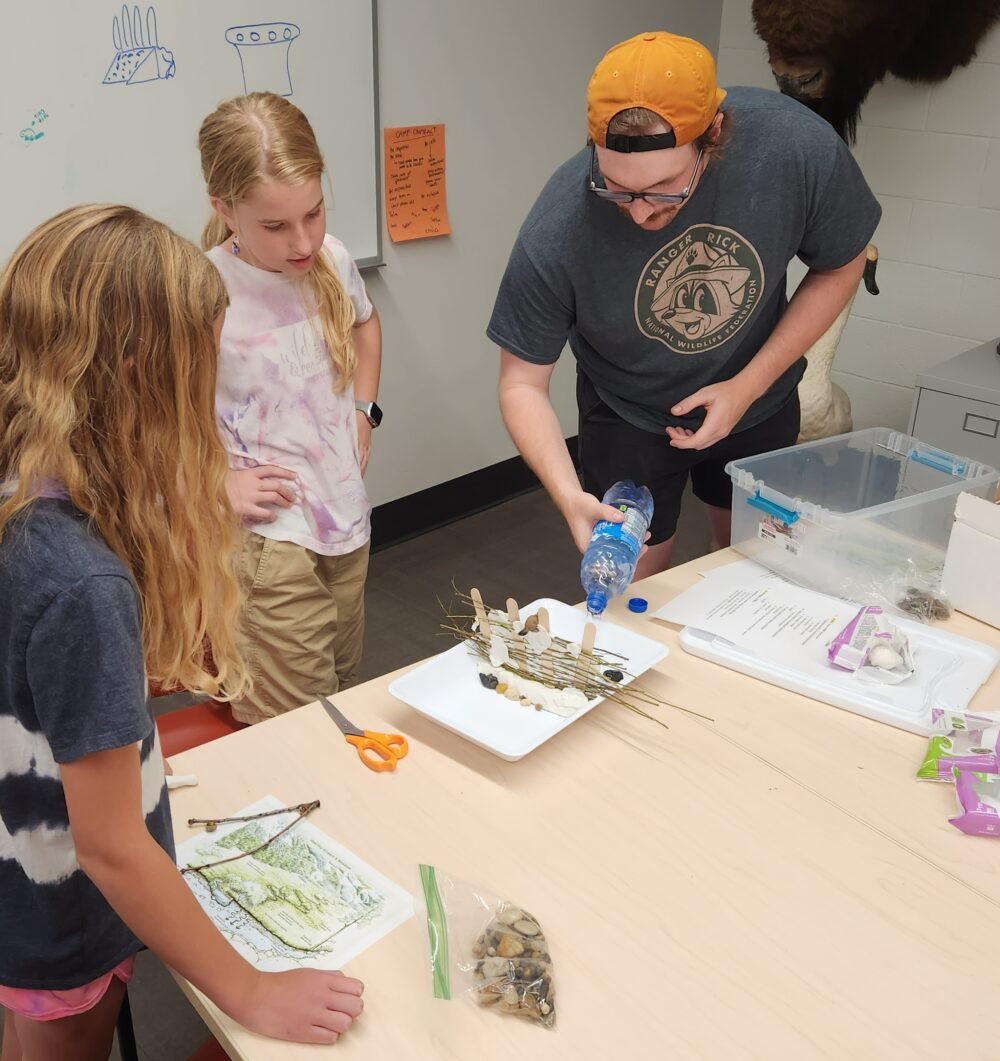We have much more to do and your continued support is needed now more than ever.
Winter Hiking for Kids: Creating Memories in the Snow
It was as a young adult that Yemaya Maurer, coauthor of AMC Guide to Winter Hiking & Camping, became aware of the pleasures of traveling through a winter landscape and mourned a childhood that hadn’t included it. As she wrote in the guide’s introduction, she wished she had known as a child “what it was like to sit on snow-carved benches around a crackling fire or wake to fresh powder.” Her sense of having missed out on something important and wonderful propelled her to work as an outdoor educator, teaching winter hiking and camping skills to children and teenagers. “Every time I dig a snow cave or slide down steep slopes on the tails of my snowshoes,” she wrote, “I feel I’m reclaiming a slice of the childhood experiences I never had.”

Maurer and St. Clair follow three simple guidelines for family winter activities: Keep it fun. Keep it safe. And keep it going.
Keep it Fun
Share your enthusiasm for being outdoors in the winter. “Kids draw on your energy,” Maurer says, so if you show enthusiasm each step of the way on a winter adventure—especially if it’s clear that you’re excited about sharing the adventure with them—chances are they’ll be enthusiastic too.
Play games. We think of winter as a time for indoor games, but winter also transforms landscapes, even well-known ones like our yards, into magical game spaces. On winter hikes, stop to make snowmen, snow angels, and snow forts. Or pretend you’re going on an “elk hunt” or a “moose safari”: The make-believe will make the miles go more quickly. Maurer also recommends watching for animal tracks in the snow, and the game “look for the alphabet,” in which children search for the shapes of letters along the trail.
Bring plenty of snacks. Pack hot cocoa in Thermoses, with or without marshmallows, for a special treat.
Choose child-friendly adventures. “Hiking along a river is usually a good bet,” Maurer says, as are hikes to frozen waterfalls. Children are drawn to water and often are intrigued by its solid state, ice. Maurer and St. Clair saw the appeal firsthand last winter during a stay at AMC’s Gorman Chairback Lodge. They skied the Long Pond Trail, pulling Gabriella, then 18 months old, behind them in a sled. At the frozen pond, Gabriella peered through the ice to the pond bottom below, walked on its slippery surface, and noticed how the frozen water made different designs and patterns. “The frozen pond made the hike memorable,” Maurer said. Hiking to waterfalls in the winter also avoids the crowds that often overwhelm those popular sites in summer months.
Keep it Safe

Dress children in layers. If a child is in a carrier or a sled, dress the child one layer more warmly than you dress yourself. “You want as little exposed skin as possible,” Maurer says. Stop frequently to check that a child is warm and comfortable. With older children, teach them layering principles so that they can regulate their own temperature as they hike or ski. It’s always important to keep track of your own clothing and gear on the trail, but it’s a matter of safety in the winter.
Keep it Going
The media regularly dishes up depressing statistics on children’s inactivity and lack of playtime outside. According to a 2008 study conducted by the Children and Nature Network, only 6 percent of U.S. children ages 9 to 13 spend time outside in a typical week; other studies suggest that even the children who do go outdoors on a given day are spending only about 4 to 7 minutes in unstructured play.
Maurer and St. Clair have many reasons to want a different childhood for Gabriella. Their own experiences in the outdoors and as outdoor educators have taught them that kids are happier when they spend time outside. “If Gabriella learns to enjoy being outside in all kinds of weather, that’s a plus purely on health factors,” Maurer says. “It’s so much harder, especially in cold climates, to stay active indoors.” St. Clair adds, “Fresh air makes for happier kids.”
That’s equally true for Maurer and St. Clair as outdoor parents. “We’re happiest when we get time outside,” St. Clair says. Sometimes time outside is only 15 minutes at the park; sometimes Gabriella “comes along for the ride” on a hike or a ski. Even then, they try to make the experience a pleasant one for her. Last year at Gorman Chairback, they packed a little pair of cross-country skis along in the sled and slipped the skis on over Gabriella’s snow boots at rest stops. “She liked getting out and trying what Mom and Dad were doing”—and her enjoyment made their ski enjoyable as well. And it’s not merely that moment that matters: What we learn as children stays a part of us throughout our adult lives.
Gabriella’s memories of childhood will likely include many of the winter adventures that Yemaya Maurer once yearned for. She and St. Clair took Gabriella back to Long Pond last summer and reminded her that it was the same place they’d visited during the winter. “It was so interesting to watch her wrap her mind around the change from that frozen pond to the pond in front of her,” Maurer said. “I could practically see an appreciation for the wonder and variety of the natural world being created, right in front of me.”
Be Out There
NWF’s Be Out There movement is excited to partner with the Appalachian Mountain Club’s Kids Outdoors online community to help more kids and families explore the outdoors! By sharing ideas and resources through guest blogs, we’re working to bring more nature into children’s lives.
This article originally appeared on AMC’s Kids Outdoors in January 2014.





















